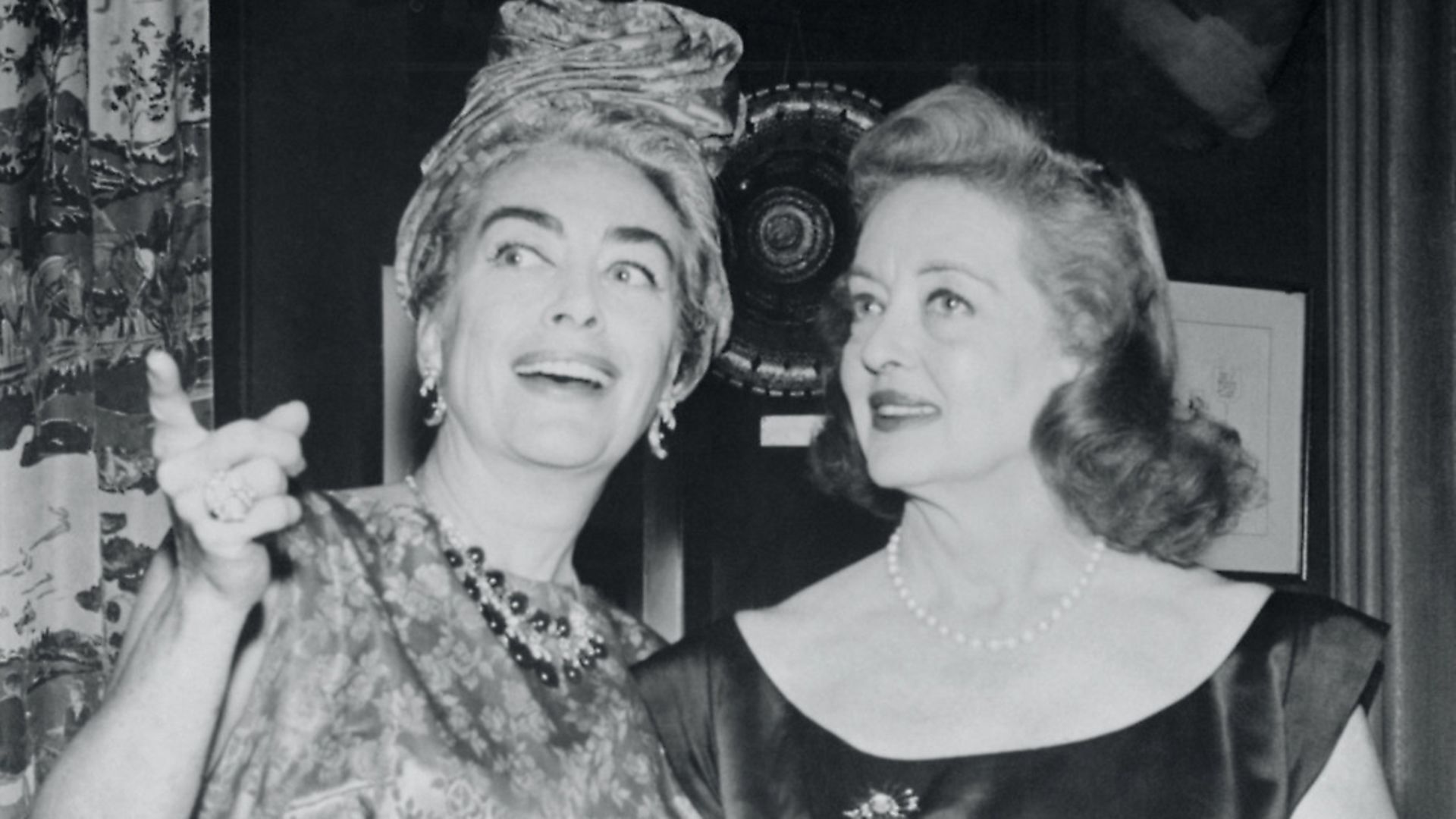
Comparing the careers of Bette Davis and Joan Crawford with those of later generations of female stars shows how cinema is changing, says Bonnie Greer.
For mothers and grandmothers, for our aunts who grew up wearing petticoats, and for aficionados of the Golden Age of Hollywood, Bette Davis and Joan Crawford were the Alpha and the Omega of the silver screen.
Ingrid Bergman was a better actor. Greta Garbo had the more indelible presence. Katharine Hepburn was radiant intelligence itself. The junior division during that golden era was also formidable: Lauren Bacall and Gene Tierney both had an entire storyline in the look in their eyes.
But Davis and Crawford had something extra – the art of the strong woman, who could sweep all before her. They were an archetype, that every woman understood and admired. Even if she consciously did not know it. Even if she never said so.
Bacall and Tierney could cause destruction. Davis and Crawford were destruction, forces of nature, the wrath of a god who himself would never stand up to the likes of them.
During the Second World War, when the men were gone, it was up to women to keep the movie industry afloat. Davis co-founded a celebrity effort called the Hollywood Canteen where stars served coffee and sandwiches to service people lucky enough to get in. She also entertained African-American troops in the racially segregated version of the Canteen. She sang the flirtatious They’re either too young or too old to white and black servicemen alike.
Crawford was dubbed ‘Box Office Poison’ in the late 1930s, until she played husband-stealing Crystal Allen in George Cukor’s The Women, which opened the same day the Second World War was declared. She shines in a cast that is 100% female, including the dogs and horses.
She next played a facially-disfigured blackmailer in A Woman’s Face, and every woman who helped make it a hit understood the metaphor she was playing: the loss of war and the things that have to be done to mitigate that loss. Mildred Pierce gave her a Best Actress Oscar. She played against type as a done-down waitress trying to make her daughter’s life better.
Davis won twice, her second, in her consolation prize role for not getting Gone With The Wind, for Jezebel.
The larger-than-life personas of Crawford and Davis can cause a viewer to overlook their craft, skill, genius, and knowledge of what happens in front of a movie camera. Their genius exists, not in the overall characterizations, but in moments: Davis looking at herself in a mirror as the ageing Elizabeth I in The Private Lives of Elizabeth and Essex; Crawford listening to her much-loved daughter castigate her in Mildred Pierce. The audience knits together these small moments. That is where these actors’ real work lies.
Crawford had been a dancer, doing the Charleston within an inch of her life so that she could just get a break; and Davis was considered just downright too nondescript to be in the movies. But she is the only movie star to ever have a pop song written about her eyes.
Neither of these two great screen presences came out of the 1940s with anything near what they had going into the decade.
Davis had a reprieve with All About Eve in which she essentially played herself at the end of her tether, which makes her work in the film all the more masterful.
She stands up not only to newcomer Marilyn Monroe’s radiant beauty, but also to Monroe’s brilliant and vastly underrated sense of comic timing.
Everyone else in the film plays against Monroe. Davis – as Margo Channing – plays with her, gives her space to showcase her innate mickey-taking gift, culminating in the classic scene on the staircase at Channing’s house.
No one else in the scene knows what Monroe is really doing. But Davis does and gives her the space to do it.
Only Crawford could pull off a duel against another woman as she does as Vienna in the climactic shoot-out of the western Johnny Guitar.
The film was named after the character who was meant to be the central force. But just as All About Eve, is not about Eve, but the counter-character played by Davis, so Johnny Guitar became about Crawford’s no-nonsense saloon keeper. By 1959, Davis was 51 years old. Crawford was 55.
The industry was reaching out to that new phenomenon called ‘teenagers’ and Davis and Crawford were just too old. Too old to be women who could be desired on the screen. Because that was what being female and in the movies was all about.
It did not matter that Cary Grant was the same age as Crawford and allowed to romance Sophia Loren, half his age in Houseboat. Or James Stewart, Davis’ age, could become credibly obsessed with Kim Novak, half his age, in the greatest piece of cinema of all time: Hitchcock’s Vertigo.
The recourse for Crawford and Davis was horror at the dawn of the 1960s, and YouthQuake.
My generation was first introduced to these two screen goddesses in the guise of Davis as Baby Jane, a child star from music hall days, and Crawford as Blanche, her terrorised wheelchair-bound sister, in What Ever Happened to Baby Jane?
On the date of the film’s release, Halloween 1962, Davis was 54 and Crawford 58. If you need a time-capsule snapshot to understand how those two ages translated to a baby boomer audience, catch Whatever Happened To Baby Jane?
Meryl Streep turned 69 in the summer, while Angela Bassett, born in the same year and on the same day as Madonna, turned 60.
At Bassett’s age, Crawford was starring in a slasher film called I Saw What You Did in which she is stabbed to death by a man who considers her too old to love.
Bassett recently played the radiant Queen Mother in Black Panther to great acclaim. Her next job after that: as a CIA agent in Mission Impossible: Fallout. At Streep’s age, Davis was in a made-for-television horror film, The Dark Secret of Harvest Home, a kind of American Puritan fright saga set in Davis’ native New England. Later this year, Streep will be top-billed in Mary Poppins Returns as Poppins’ cousin.
Neither Streep nor Bassett are anywhere near the end of their careers. In the movies, it is the female who continues to be the object of desire, the Holy Grail at the end of the quest; the visual linchpin of our time and place. And as the industry – the art form – produces more, writes more, directs more, this ‘idea of woman’ will slowly shift; becoming fuller and more human.
Older women on-screen, complete with complex, full lives, are a symbol, not just of the industry’s maturity, or its acknowledgment that leading actresses can command as much attention and box-office as leading actors. They extend the possibilities of story-telling itself; of the human eye.
Angela Bassett’s Queen Mother in Black Panther is more than a gracious and beautiful symbol of her fairy-tale land: she is another level to which the art form itself is ascending.










